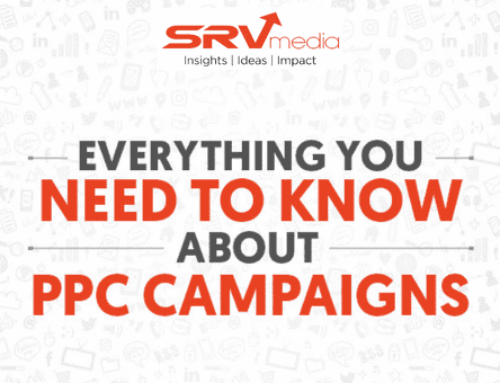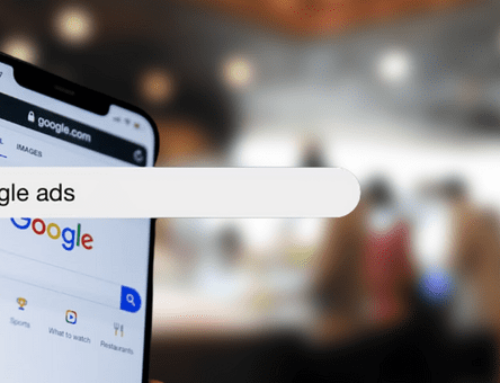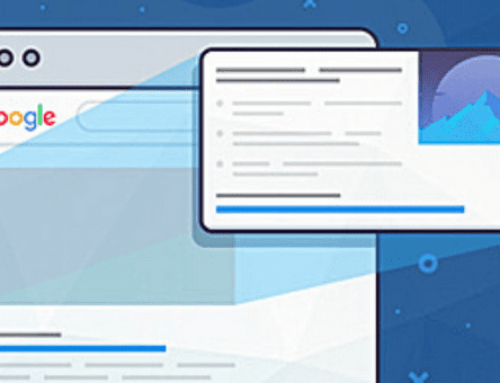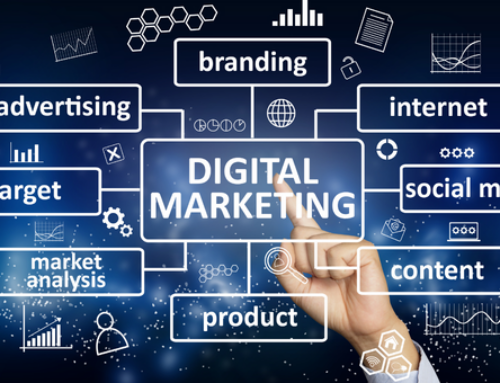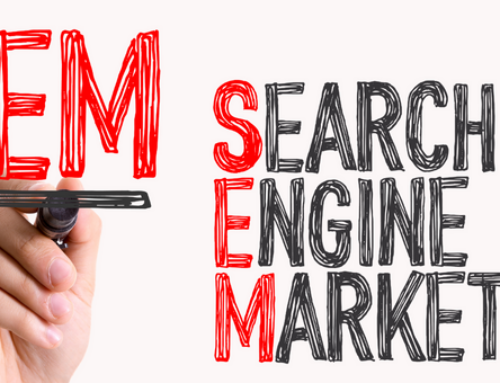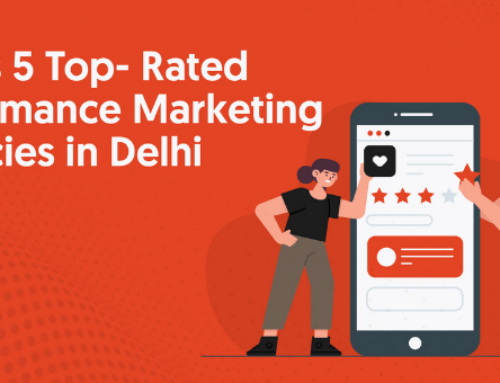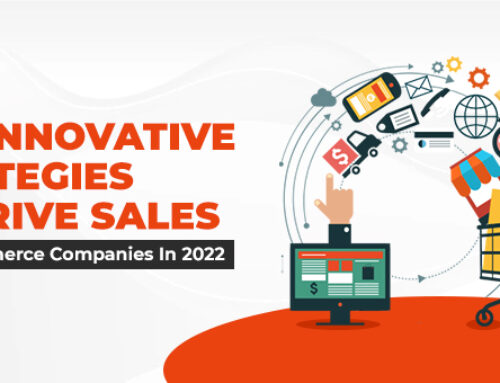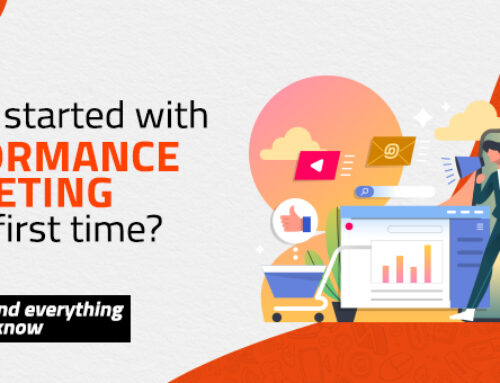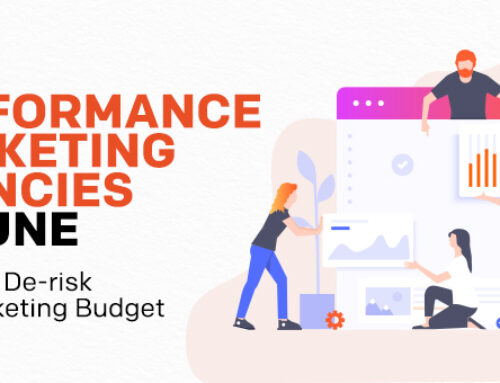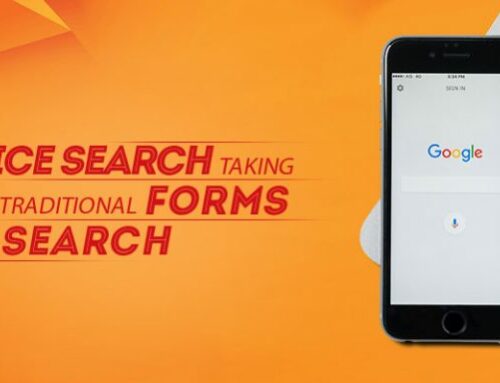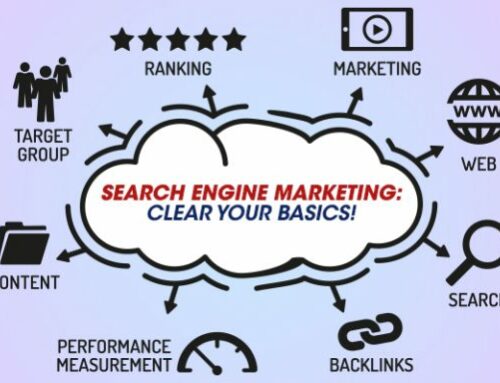A Brief Understanding Of Search Engine Marketing Solutions
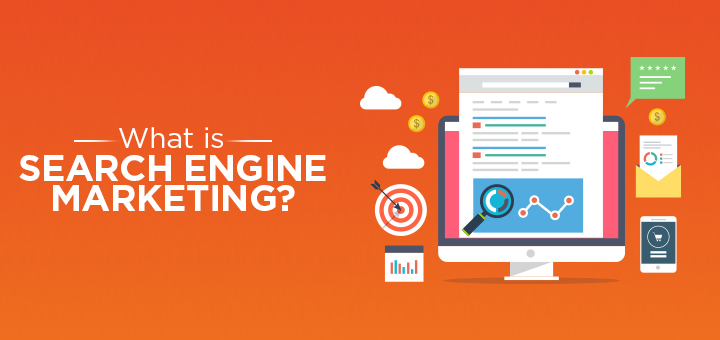
When people realize they want or need something, they instinctively turn to their search engine of choice, and that search engine is Google. We are all familiar with the general process of using a search engine – After you type something into the search bar, it responds with a list of web pages (called the SERP, or Search Engine Results Page) that are relevant to your query. Search Engine Marketing (SEM) refers to the ads that appear above the organic search engine results; also known as Pay-Per-Click (PPC) Ads, because of the unique pricing structure which only counts towards the advertising budget when someone clicks on their ad.
SEM is a very effective strategy because it gives you the opportunity to reach a consumer at the very moment they are searching for a product like yours, but developing and maintaining a PPC campaign requires a lot of time and expertise. So today, we thought of getting you started with a few search engine marketing techniques required to level up your business.
Search Engine Marketing – The Evolution
A short time after the advent of the Internet, search engines set the stage for SEM Search Engine Marketing. OpenText Corporation debuted the first pay per click ads paving the way for an early form of SEM. In fact, it didn’t even have a name until technologist and entrepreneur, Danny Sullivan coined the term ‘Search Engine Marketing’ in a 2001 article on Search Engine Land, that the field became recognized in its own right.
A few years after the first Pay Per Click ads were launched, GoTo.com began an auction-based system that operates in a similar fashion to how the search engines of today run their paid advertising business. As more devices capable of browsing the Internet came into our pockets and into our homes, people began spending more time on the web, guided to the content they wanted by search engines. These cultural developments allowed SEM to explode in popularity.
What Exactly Is Search Engine Marketing?
Search Engine Marketing, popularly known as Pay Per Click or Paid Search, garners attention when it comes to increasing the business reach. SEM strategies are the fastest way to reach the maximum online audience, and thus increased profits.Good SEM or search engine marketing techniques help sway a customer’s buying decision by giving them a perfect platform to showcase the advertisements exactly where it would be needed.
Search Engine Marketing or simply put, Search Engine Advertising allows you to directly display your paid ads among the search results on various search engines, like Google and Bing. These advertisements work on keyword searches – and SEM scanning – a crucial benefit of Search Engine Marketing (SEM) makes it possible for them to be listed alongside other search results.
The Importance Of Search Engine Marketing
You would surely not like to bury a business beneath the millions of searches on the Google search results and would wish to increase its reach across the globe – Well, paid search engine marketing is the way to go. It is more like a paid campaign that showcases the advertisements on the front page of Google, which, in turn, scales the probability of a user clicking on it.
In this cut-throat online competition, there is a need for every business to shine throughout. And, when online marketing promises to offer a helping hand, there could be nothing better.
One of the most important features of Search Engine Marketing is its ability to produce virtually rapid findings. As a result, it is an excellent short-term technique for rapidly increasing awareness for your products, services, or organisation.
Objectives fulfilled through Search Engine Marketing (SEM):

1. Generates Brand Recognition & Revenues Quickly
With the right ad copy and strategies in place, see recognition & sales coming in the same day. It doesn’t need time to rev up. It’s easy to get started with something like Ads.
2. Grows with Your Business
SEM is incredibly scalable, especially with the help of professional search engine marketing services. Test things out. See what works. Keep costs low if you have a very limited budget.
Then as revenues go up, increase the number of ads. Remove ads that aren’t working. Refine your campaigns. And increase your daily ad spend. In Ads and most other PPC platforms, you can set a daily budget as low as $10. This way you never get surprised by a really high bill for advertising.
3. Reaches People in the Right Place & Time
Nearly half of the world’s population is now online. Over 93% of online experiences start with a search engine. People use search engines because they’re looking for something. Being the one to deliver it, helps you build a trust bank account with that person. Even if that click doesn’t turn into an immediate sale, it’s a touchpoint that furthers the person’s journey toward becoming a paying customer.
4. Reinforces Name Recognition
When you get a new customer, you may think that the person just found you and made a purchase. But chances are that journey started days, weeks, or even months ago. The way you consistently and repeatedly present your brand during that time helps turn a prospect into a paying customer according to search engine marketing experts.
Recognition becomes familiarity. People notice brands they’re familiar with over brands they aren’t. Most people would rather spend a little more with a brand they know than a no-name brand.
5. Reaches Your Prime Target
Search engine marketing allows you to get really focused on your target customers in a way you never could with traditional marketing. Why? Because it would be insanely expensive the traditional route.
An ad in search engine marketing or a similar type of Search Engine Marketing doesn’t cost you anything until someone clicks it. You can create 10. Or create 100.
6. Gives You a Competitive Advantage
Through exceptional SEO, does your competitor already have a coveted top spot in the organic search results? You can appear above them with paid ads; swipe a click that would have been theirs.
With strong search engine marketing and optimization, strategy and compelling copy of your own, you’ll have the advantage over the less savvy competition. Have a smart competitor? The right strategies from a search engine marketing specialist can also outsmart them to increase their own market share.
Types of Paid Search Ads in Search Engine Marketing
1. Traditional PPC – Search Engine Text Ad
These are the most common forms of Pay Per Click Ads. They show up in the Search Engine Result Page (SERPs) ahead of organic listings. They may appear – above, to the right or below organic listings, depending on the cost of the ad and the search engine.
These ads can be easily tracked and managed. Setting a budget is easy and you can target them very specifically. It’s also important to remember that you only pay when someone clicks on the ad, so you’re not paying every time you make an impression, but every time a consumer makes the choice to choose your ad. These are the most utilised forms of ads by both individuals and SEM marketing agency

2. Google Shopping
Google Shopping ads work in a very similar way to traditional PPC ads. They work based on keywords, are highly targetable and highly measurable. They are the perfect fit if you have a product to sell (favourable for e-commerce). Google Shopping Ads connsistently return lower Cost Per Conversion than text ads. However, you have to adhere to strict Google rules and systems when it comes to your online inventory.

3. Native Ads
Native Ads are ones that blend into the other content on the webpage. You will often find them on publisher sites (News, Journalism, etc) and most Social Media Ads that take this form. The idea behind them is two-fold. From the publisher’s point of view, they are relatively unobtrusive and unlikely to cause an adverse reaction in the casual consumer. For the advertiser or the Search Engine Marketing firm, these kinds of ads may bypass our subconscious ‘ad-block’ and they do tend to return better interaction rates than Banner Ads.
4. Remarketing / Retargeting
These kinds of ads combine Search and Display to an extent. Remarketing is the practice of displaying an ad based on the user’s history. This is why if you’ve been searching for holidays you’ll suddenly find lots of banner ads for travel companies and hotels popping up on the sites you visit.
Remarketing can be a great way to increase your brand recognition and awareness. You can use all the same targeting techniques as with other Paid Search Ads as well as having the qualifier that you know they’ve shown some interest in your company or product already.
5. Display Ads
These are your classic advertisements though they’ve gone through a lot of changes in the last few years. These days advertisers or a search engine marketing consultant are much more in tune with what the consumer will tolerate, with the rise of Ad-blocking Apps. Advertisers now understand the trade-off between trying to get the attention of a customer and being blocked out completely.
On the left hand side of the below image, you can see the display ad by Union Bank of India.

6. Inbox Ads
Google has made the Google Mail Inbox open to all Google Ads users. This means that you may now find ‘Sponsored’ content sitting at the top of your email box. These are perhaps the most targeted ads offered by Google and they remain reasonably unobtrusive. Unless clicked, they simply appear like an email.
They are also called the Google Sponsored Promotion ads since they appear in the sponsored tab of Gmail.

Search Engine Marketing (SEM) Platforms
SEM in digital marketing has proven to increase and optimize brand awareness, generate online leads, increase sales, and much more. It’s a priority you should concentrate on to keep up with the growth of the constant changes in online activity.
First and foremost when implementing your plan from search engine marketing consulting services, you are required to choose a platform that fits your business’ operational needs. Knowing what makes each one unique will help you make an educated decision on which best fits your model.
Google Ads
Google AdWords (now Google Ads) is one of the most popular SEM platforms in the market. One reason for its large market coverage is that it’s developed for the highest-trafficked search engine globally and all you need to get started is a Google account (which most people already have). The other is that Google has built a name for itself as a data analytics powerhouse, and its analytical capabilities certainly live up to it.
Bing Ads
Bing Ads is another prominent SEM platform and generally offers a cheaper Cost-Per-Click (CPC) than Google. One can assign campaigns to different time zones, which is perfect for those who want their campaigns to reach international audiences. You can also adjust your settings for an ad group without having to change your campaign.
Keywords: The Foundation Of SEM
Keywords are the foundation of Search Engine Marketing. As users enter keywords into search engines to find what they’re looking for, it should come as little surprise that keywords form the basis of search engine marketing as an advertising strategy.
SEM Keyword Research
Before choosing keywords to use in your search engine marketing campaigns, you would be required to conduct comprehensive research as part of your keyword management strategy.
For that, you would need to identify keywords relevant to your business and that prospective customers are likely to use when searching for your products and services.
Simply enter a keyword that’s relevant to your business or service, and see related keyword suggestion ideas that can form the basis of various search engine marketing campaigns. You can also make use of various tools like keyword.io or ubersuggest.io. or Google’s Keyword Planner.
Here is what each of the columns displayed in the Google Ads Keyword Planner Tool will tell you about each of the keyword ideas displayed.
- Competition – “The Competition column gives you a sense of how many advertisers are bidding for a particular keyword.
- Global Monthly Searches – “The approximate 12-month average of user queries for the keyword on Google search.”
- Local Monthly Searches – “If you specified a country or language for your search, this is the approximate 12-month average number of user queries for the keyword for those countries and languages.”
Negative Keywords
In addition to finding keywords for bidding, thorough keyword research will help you in identifying the negative keywords – search terms that you should exclude from your campaigns. Negative keywords aren’t terms with negative connotations, but rather irrelevant terms that are highly unlikely to result in conversions.
For example, if you sell ice cream, you might want to exclude the keyword “ice cream recipes”, as users searching for ice cream recipes are unlikely to be in the market for your product.
Such a concept is known as search intent or the likelihood that a prospect will complete a purchase or other desired action after searching for a given term.
Google Search Suggestions
Once after having a basic idea about. search engine marketing management, you can expand your keyword research by using the freely available suggested search. Visit Google.com and type in a keyword in the search box. What you will then see is ten phrases related to your keyword popping up below as more targeted, suggested searches.

Tip: If you are interested in the CPC pricing and also getting keyword ideas to help with content development, go with the results while logged into Google Ads.
You can also select specific Match Types by clicking the “Modify Search” tab.
Inputting your search term with the added punctuation will change the traffic volume for Searches based on the approximation of traffic that a keyword gets on Google.
- Broad – The default setting that uses any word within your keyword phrase.
- [Exact] – If you are targeting the exact match for social media, ads would only show if someone typed in social media but not any other variation of that phrase.
- “Phrase” – The search volumes for all terms that include that whole phrase. It will match with queries that include your keyword phrase in the exact order but may include additional words too as suffix/prefix.
Making the Final Keyword Choices
- If your website is commercial (offering products or services), go with keywords that seem to have the most commercial intent based on the current ranking websites. If your website is informational (blogs come to mind), go with keywords that have the most informational intent.
- Look at keywords with high search volume with top competitors that have lower domain authority and backlinks.
- If your website is already ranking on the first page, but not in the top 5 spots (or beneath other search result areas such as images, local results, etc.) and the keyword has good search volume, focus on getting those keywords and phrases to move up.
Search Engine Marketing Account Structure
Another crucial aspect that is essential for the success of a search engine marketing campaign is the account structure.
Logical keyword grouping and account structure can help you achieve higher click-through rates, lower costs-per-click, and generally stronger overall performance of the campaign.
An optimally structured account is comprised of five distinct elements:
- Ad campaigns
- Ad groups
- Keywords
- Ad text
- Landing pages
Google Ads Campaign Structure Setup

Step 1 — Create a Google Ads Account
The first step is to click on the Google Ads link which will take you to the page where you can create your account. After creating your account, which is as easy as setting up a Gmail account, you can now click “Create a campaign.”
Step 2 — Choose Campaign Name and Type
The best way to get started for now is to select “Search Network only” as the campaign type and then assign the appropriate name to your campaign.
Step 3 — Geography Selection
Google Ads allows you to target specific geographic locations with your keywords. This way you can get more refined and better quality results when users finally click your ads and are redirected to your website. You can select countries, parts of countries, provinces or states, cities or even pincodes.
Step 4 — Select your “Bid Strategy” and Daily Budget
The next step is to choose which bid strategy you will use along with your desired daily budget. Change from default strategy and choose “I’ll manually set my bids for clicks.” By choosing to set your bids manually, you will have more control over your PPC campaign, and it also helps you gain a deeper understanding of Google Ads.
The daily budget refers to the maximum amount that you authorize Google to charge you every day. There are several payment options to choose from including, manual payments before your PPC ads show or automatic payments.
When determining your daily budget, set a reasonable amount for your Google Ads campaign. It is important that you start small and then work your budget up once you have increased your experience in choosing the right keywords.
Step 5 — Ad Extensions
Basically, ad extensions refer to an ad format type that shows additional information about your business by extending the ads. They help in providing improved visibility and adding more value by enhancing your CTR or click-through rate. Examples of ad extensions that you can incorporate to your Google Ads campaign include things like getting directions to a location or placing a call.
Step 6 — Create Your PPC Ad
You are now ready to create your first ad. It is important to note that more people usually click on adverts on search engine results pages when the main headline incorporates the keyword they are searching on. Hence, it is good practice to use keywords when writing your headline when possible.
Furthermore, make your ad copy relevant but catchy to attract the audience to click the link and remember that you only have 30 characters to use here. A good quality ad will result in a higher conversion rate and more leads.
The next two lines also allow a maximum of 30 characters each. Place your URL in the final line of the ad.
Here is a brief summary of the Google Ads template you should follow:
- 3 Headline Texts(30 characters each)
- A Display URL
- 2 Description Texts (90 characters each)
Step 7 — Fill in Your Chosen Keywords
Obviously, you need to have done the necessary research to determine the right keywords for your campaign. In this step, you are just filling in the chosen keywords into the keyword section. When you are just getting started with Google Ads, it is not recommended to fill in hundreds of search terms.
Instead, start with several important ones that are most relevant to the service or product you are advertising, and then gradually build from there.
Step 8 — Maximum CPC or Default Bid
CPC is the maximum amount per click that you are bidding for each keyword. Remember, each keyword is hypothetically a unique market. This means that all your major keywords will require their own individual prices. Google will enable you to set the individual bids for every keyword later on. If you want to know the best bid strategy for you, just read Adwords’ help page about it.
If you are working with a low budget, it is better to start by bidding on cheaper keywords to ensure that your ads are seen by the highest number of people.
Step 9 — Review the Ad
The next step in setting up your Google Ad campaign is to review your keywords and the whole ad, in general, to ensure that everything is okay. Check your CPC and ensure you are getting the page positions you want. Finally, check the amount spent as your daily budget and ensure that you do not unknowingly drain your business.
Step 10 — Enter your Payment Information
This is the last step, and your ads will immediately be visible once you have confirmed your billing information. Now, you are set to go!
Bing Campaign Structure Setup
Bing Ads has updated its campaign creation workflow to make it easier for advertisers to set up campaigns. Throughout the process, more options are available so you won’t have to go back and remember to update settings and options after a campaign is created. Performance estimates are also built-in along the way to help inform your settings from the outset.
The new setup starts with the option of selecting a campaign goal or importing campaigns from Google, importing from a file or researching keywords.
If you select a campaign goal, the options available will be tailored accordingly in the remaining setup steps. From the revised Campaign Settings screen, Bing Ads has added the option to copy settings from an existing campaign and has consolidated location targeting options to include radius targeting management, along with another location targeting.
The ads and extensions step follow. At this stage, Bing Ads now makes your library of extensions accessible and highlights ad extensions that seem to align with the marketing goal selected for the campaign.
The final step is to set a campaign budget at ad group bids. Bing Ads shows performance estimates for the ad groups based on the bids and campaign settings.
The Search Engine Marketing Ad Auction
One of the most enduring misconceptions about search engine marketing is that whomever has the largest advertising budget wins. Although a larger advertising budget can certainly be advantageous, especially when targeting highly competitive keywords, it’s far from a requirement for success with search engine marketing. This is because all ads go through a process known as the ad auction before appearing alongside search results.
How the Ad Auction Works
The ad auction process takes place every single time someone enters a search query into Google. To be entered into the ad auction, advertisers identify keywords they want to bid on and state how much they are willing to spend (per click) to have their ads appear alongside results relating to those keywords. If Google determines that the keywords you have bid on are contained within a user’s search query, your ads are entered into the ad auction.
How Ads ‘Win’ the Ad Auction
Not every single ad will appear on every single search. This is because the ad auction takes a variety of factors into account when determining the placement of ads on the SERP. Not every keyword has sufficient commercial intent to justify displaying ads next to results. However, two main factors that Google evaluates as part of the ad auction process are your Maximum Bid and Ad Quality Score.
The Maximum Bid is the maximum amount you have specified you are willing to pay for a click. Quality Score is a metric based on the overall quality of your advertisement. Google calculates these metrics during the ad auction to determine the placement of advertisements. The result of this calculation is known as Ad Rank.
The Importance of Quality Score in SEM
Given that Google AdWords’ Quality Score comprises half of the ad rank formula, it is one of the most crucial metrics search engine marketers can focus on. High-Quality Scores can help you achieve better ad positions at lower costs because Google favors ads that are highly relevant to user queries.
A/B Testing in Search Engine Marketing
A/B testing (or split testing) is experimenting and comparing two variations of a campaign asset like landing page, ad text, call-to-action, or creative.
By displaying two variations of your campaign assets, you can see which one attracts more conversions from your customers. By checking customer response on the variations, you’ll be able to alter your strategy to create better campaigns.

Using A/B testing to experiment with marketing those characteristics to find the ideal combination for your customers not only provides them with better experiences, but it also breeds trust and confidence in your brand. When visitors begin to trust your company because of the value you provide, increased sales and customer loyalty are a natural result.
Putting The Puzzles Together
Ultimately, when measuring the success of SEO SEM marketing, it is not just about increasing traffic to your website.It is also about the increased traffic leading to greater sales. Your goal is to find ways to increase the number of visitors and their conversion rates even if it is with the help of the best search engine marketing companies.
It will help you to know exactly what it takes to make your Search Engine Marketing program successful. Alternatively, you can look for the best search engine marketing company India. Looking for a combination of Search Engine Marketing and PPC agency will definitely help you achieve desired results.

